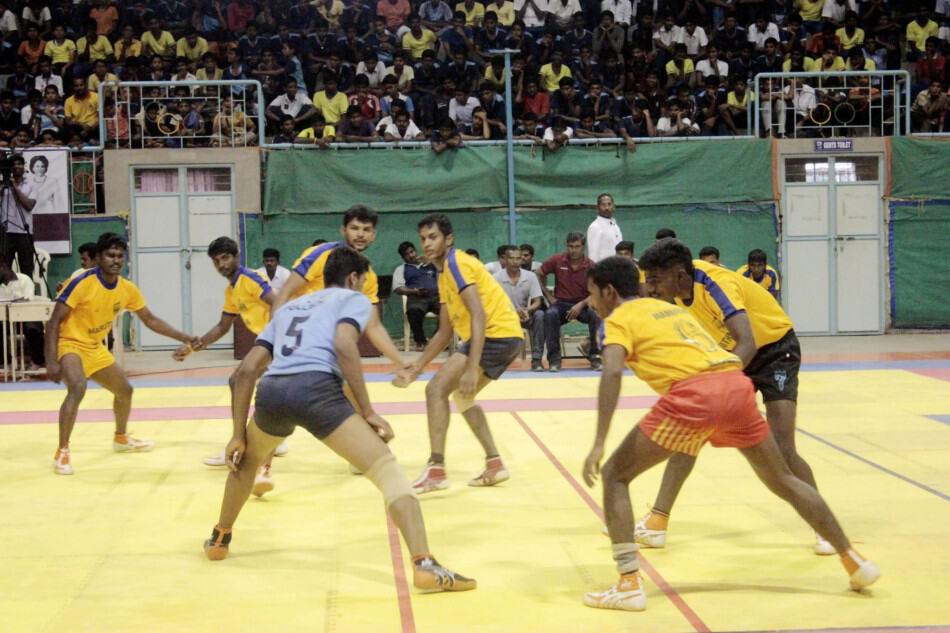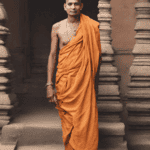Outline of summary
Let’s go through the article that takes us to our childhood that is exactly tension free. Children often play to spend their spare time and fortunately the playing time been the relaxation time only by which children get rid of educational stress. Moreover, there were not been frustrating educational system followed to kids of that period rather in present days there are fully tensed and stressed kids due to the education system. The traditional games are so popular and played by our ancestors that are passed generation after generation. The games are known for their physical movements that build the energetic body system but today’s fun time are filled with gadgets and electronic system.
Most of the traditional games are been played as group forming unity in diversity and friendly integration despite any disputes arise it is sorted out among themselves and continued playing the whole day. Hinduism launched most of the primary games in the form of physical exercise that refresh every internal organ and stimulates the quicker responsive kids to rise with.
There is scientific influence overwhelming every traditional game that drags kids to play with amidst of entertainment. Certainly, there was no expenditure to the props used for playing traditional games and the kids used day-to-day scraps by recreational mentality. This re-creating mentality scrutinizes the sense of perception thereby stimulate the sense organs for a quick and faster response, perception and intelligence.
The list of traditional games played is described one by one.
1. Chaupar/ Pachisi
Description
One of the most popular games that are being played in India and the world around with minute modifications is Chaupar/ Pachisi. Pachisi is also known as ‘’Twenty five’’ is denoted by some other nouns like Ludo in the UK, Parchi in Spain and Parcheesi in the USA, etc. This game is played with a maximum of four members and a minimum of two other extents.
History
The cross-game is believed to be originated in the medieval time in India around the 6th or 7th century. But the game achieved improved appreciation among the dynasty and start blossoming with flying colors.
Mode of game
There are no specific rules but it differs with locality and there are four arms drawn in cross modules with each arm divided into three adjacent columns. Accurately, eight partitions are made on every column of the four arms. A distinguishing mark like the cross is made on the three squares of a column known as ‘castles’. One at the bottom end and the two others in the middle of column partitions are denoted.
Code of victory
Beehive shaped small pieces are chosen in four different colors such as black, yellow, red and green and the four members can choose either or colors four each and play in the partnership. One that defeats small pieces of others and proceeds forward towards the destination is considered as a winner. There is no particular scoreboard in this game.
2. Pallanguli / Wana Guntalu
Description
This traditional game is specially meant for girls. Maximum of two members can play Pallanguli using small pebbles, stones or seeds countering 146 in numbers. The wooden board that has fourteen pits of seven each side and also exercises variations in the layout of the pits and arrangement.
History
Pallanguli is the traditional ancient game that is being played in Tamil Nadu which is later spread by the neighboring states like Andhra Pradesh, Karnataka, and Kerala. Even the neighboring countries like Sri Lanka and Malaysia are known well versed in playing Pallanguli.
Mode of game
Two players are asked to split and distribute the pebbles arranged in the respective pits. Collecting an excessive number of pebbles is the ultimate goal of the game. The consecutive transition of pebbles in the adjacent pits keeps on going to a certain extent. Once the pebbles are completely got over to distribute followed by empty pit adjacent to relocate the pebbles are considered as the completion of the first chance.
Code of victory
There are scoring points highlighted in the game that the whole game should be completed within 60 seconds to 7 hours. The one who collects several pebbles or small stones will be declared as the winner. The game enhances the quick ability of mathematics.
3. Snakes and Ladders
Description
The most interesting game that is very much popular in India is snakes and ladders. The board that contains grids numbered up to 100. Mostly two and sometimes more than three people are capable of playing snakes and ladders. The game is influenced by the ladders and snakes that are connected between two specific squares on the board.
History
‘’Paramapadham’’ is the literal Tamil meaning of the game but known differentially depend on the locality. It is the spiritual game that has been played on the tenth bright fortnight of Margazhi every year and believed that the reach to the heavenly matter is achieved by the game.
Mode of game
One should proceed further with the roll of the die appropriately and pass over the gridded squares with the help and hindrance provided by the ladders and snakes respectively. The player should navigate from the point of beginning reach and the finishing point is considered as the winner of the game.
Code of victory
No special scoring is influenced in the game. The ultimate goal of the game preaches that life is full of opportunities and hurdles whereas the ladders are meant for the opportunity and the snakes to the hurdles.
The one reached first is generally the winner or top ranker. Then following the next, goes on.
4. Ashta Chemma
Description
It is the two or four-player board game quite similar to Chaupar but not exactly. It includes small pieces of pebbles or coins to navigate on the rolling of the die. The game is played in Andhra Pradesh, Karnataka, Telangana, Tamil Nadu, Kerala and northern parts of India with varying names specifically.
History
Mostly parts of Andhra Pradesh are reported as spotting a place of the game whereas the game migrated and radiated across the neighboring States with periodical improvisations. The game is specifically played by girls but boys show quite an interest sometimes but are known for improving concentration and intelligence skills.
Mode of game
Cowry shells count up to 4 or 6 and are mostly used which is also replaced with dice appropriately. Inverted or the ‘as it is’ position is to choose to place the coins on the board.
Code of victory
No special points or scoring involved in the game but each player should keep rolling the dice and navigate in accordance to.
The one reached first is generally the winner or top ranker. Then following the next, goes on.
5. 5 Stones / Kallangal / Anchangal
Description
Well known indoor games most often played by girls among themselves are the 5 stones or Kallangal or Anchangal. Small stones counting up to 5 are commonly used to play with varying permutation and combination. This game does not include scoring points and marks but everyone gets a chance to play.
History
The game is taught by the grandma and children later play among themselves. This game improves the concentration power and the power of the throw and catches whilst playing.
Mode of game
Usually, 2 or more players can play that includes eight steps of picking differing counts of stones at the time. The player may lose his or her chance if they happen to miss the stone or mismatch the sets of picking.
Code of victory
Not score dependent but played as time pass beside it also improves the vision and concentration power while playing.
6. Lakhoti / Kancha / goli / goti
Description
The game increases the concentration and aiming skills. It includes rules and regulations that influence the game. Group of boys used to play this game and it includes drawing two lines with a distance of three feet gap. A set of Goli or Marbles are thrown inside the hole later every boy takes up his turn.

History
This is the universally played games that have been played by the little boys in the streets of India. It is also known as Goli / Goti/ Kancha and other names in different parts of India. Pebbles, Goli obtained from the soda hub are used to play this game.
Mode of game
Firm pressure is given by one fore-finger taking the Goli backward like a bow and arrow. Now the holding fore-finger releases its pressure that may lead to throwing off the Goli that hits the set of Goli placed inside the hole.
Code of victory
The one that collects the maximum number of Marbles or Goli is considered as the winner.
7. Gilli Danda
Description
It is known as Gilli Danda in Tamil Nadu, Chinni kolu in Kannada, Kuttiyum Kolum in Malayalam and among other places. Two differently sized sticks are used for playing that includes the larger one called Danda whereas the smaller one sharpened at two ends known as Gilli.
History
The game that has been the forerunner to the widely played sport cricket is Gilli Danda. It has been played in different parts of India and navigated throughout the world among South Africa, Cambodia, and Turkey. However, the game is entrusted to born within the Asian continent.
Mode of game
More than four boys are meant to play this interesting game. Initially, the player hits the small-sized Gilli and strikes the same in the air to a certain distance. Once Gilli starts traveling in the air, the player will run to score runs meanwhile the fielder tries to catch the Gilli to drop out the player. Unless the fielder gains to catch the Gilli, the player will keep on striking the small stick and earn points.
Code of victory
The player that scores more points will be considered as the winner and the game continues with the next person.
8. Lattu
Description
The game requires a wooden top or the Lattu has been colored appropriately. Pointed nail in the center through which the string is circulated for the spinning top. Finally, the string that is required for tying the top for spinning. The string helps to catch the revolving spinning top to gain points.
History
The spinning top or the kancha or the Lattu is the traditional game that has been played commonly in the villages of India. It is known as Bambaram in Tamil. The very well versed game that every boy happened playing the game in their childhood is the Lattu or Bambaram.
Mode of game
The game includes simple rules like players to begin the set path for spinning the top. Also, they wind up their top with the respective string provided and then to re-wind the top leaving it to spinning itself. Again the player has to pick the revolving top as quick as possible.
Code of victory
The player that loses to catch the spinning top or if the top happens to stop itself then it is called ‘’mattai’’. The last player would be subjected to keep the top inside the circle which is then hit by other players or to bounce outside the circle.
9. Kabaddi
Description
The game owns two major disciplines called Punjabi Kabaddi played in the circular style and the standard style played in the rectangular court and that has been followed in international leagues and tournaments.
History
The contact team of sports been played in India, Bangladesh and throughout the world is the Kabaddi. It is known as Sadugudu in Tamil Nadu and known as Kabaddi in almost other parts of India. The game includes two teams of seven players each.

Mode of game
The ‘raider’ should come forward and run into half of the court of the opposing team thereby tagging the players of the opposing team. The defenders who are tagged by the offender are considered losers whilst the offender will gain a point for tagged players. The raider may lose the game if he or she is tagged by the opponent team, reciprocally and all this happens in a single breathe.
Code of victory
The team or the player that scores maximum points will be considered as the winner. Strictly, every ride is taken in a single breath and the player should try to tag the opponent or get tagged by the opponent, optionally, to gain a point.
Recently, the game is glooming and blossoming all over the world and of course, the game is being the national game of Bangladesh.
Also, Kabaddi is having a world cup and also played in the German Military for strengthening. Reference Wikipedia
10. Satiola / stones or throw ball
Description
This is the very familiar sport that has been traditionally played across the net between the two teams of nine players each. Of course, the game is ought to be the non-contact sport that includes throwing a ball between the players and aspired with unique rules to proceed with.
History
In India, the game was drafted with firm rules, very first, by the year 1955 and played the national level championship by the year 1980. Both men and women are supposed to play the game following certain rules drafted by the board of sport ship.
Mode of game
Players should abide by the rules while delivering the service and even it should be within three seconds. Do not pass by the ball among players but the player can jump while catching the ball. The same can touch the net but not the antenna. Rules keep on going like this to play the whole set of the match. Points are scored by the player as an individual.
Code of victory
Maximum points gained by either of the team are considered as the winner of the game. Individual performance is also taken into consideration while honoring the player at the time of announcing the winner, too.
11. Kho-Kho
Description
The game consists of two teams of 12 members each and those 9 will be in the field whereas the 3 of the rest are extra players. The players are arranged to sit or kneel adjacently facing in the opposite direction. More exactly the running and chasing concept is involved in the game.
History
The particular run and chasing game are being in practice of play since the medieval times of India; however, no exact period of origination can be suggested to the game. By the time of First World War, the game begins a blossoming era with fewer modifications.
Mode of the game
The players are arranged by sitting/ kneeling in the field. The player that comes for the first ride would take the run around the player sitting or kneeling. Running player should tag or tap any one of the players sitting or kneeling so that the second person begins his course of running around. Meantime, the player should not be caught by another player that runs behind him.
Code of victory
Player while on the ride should not get tagged or tapped by the opponent chaser behind him. At the same time, he should skip his chance by choosing the other person to rely on his ride.
12. Poshampa
Description
The game is very popular among girls mostly and being played as a group. The game includes singing a song by two girls amidst others. This game encourages establishing skills.
History
The game is most familiar in the interior parts of the Indian states. All over the States of India, girls with a group of three or four members used to play the game.
Mode of the game
Two girls stand close with their hands locked above the heads and sing a song. The rest of the people keep moving under the bridge.
Code of victory
At the end of the song, the two girls bring down their hands, like a cage, to catch the one that tried passing by. The game proceeds further with the remaining players.
